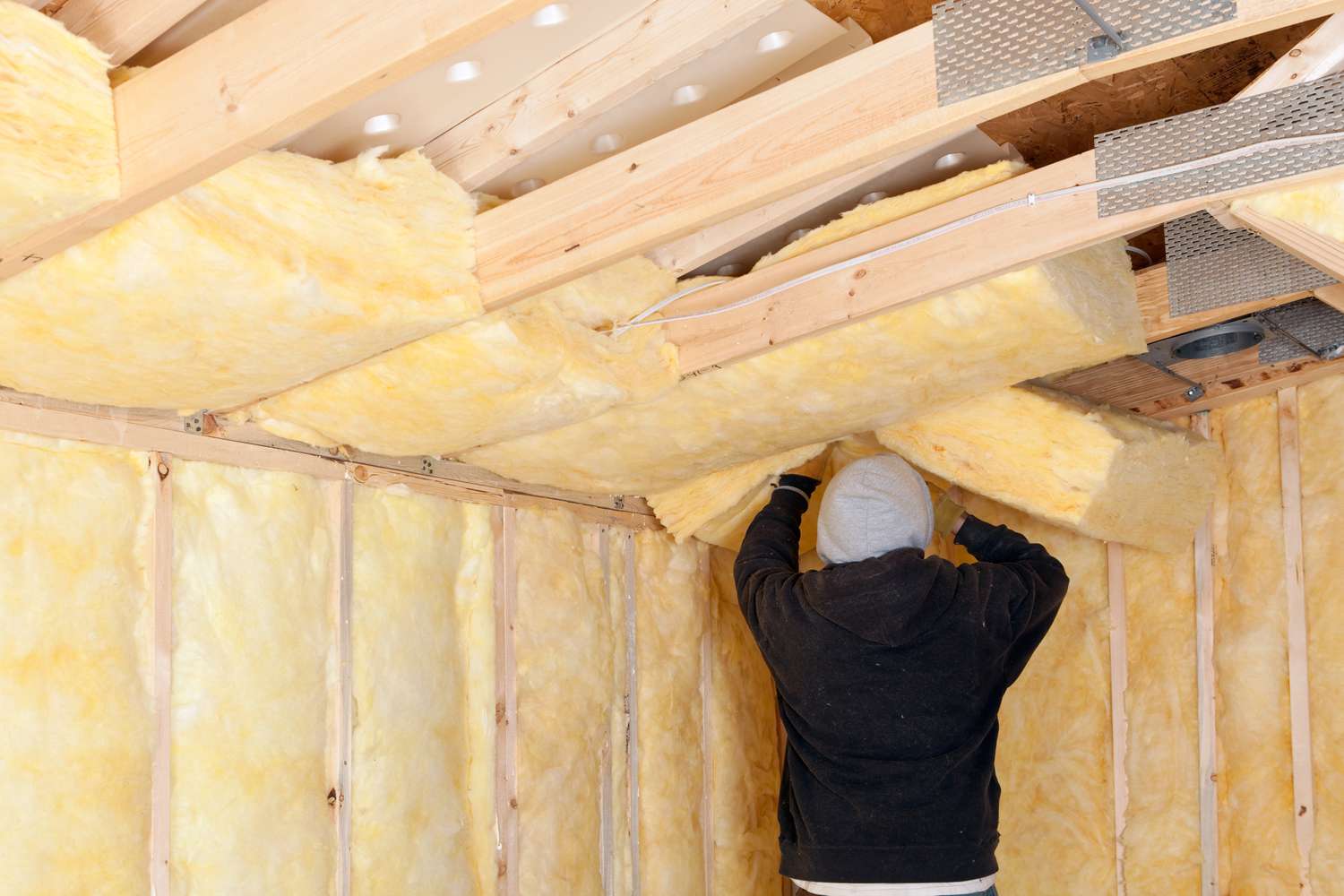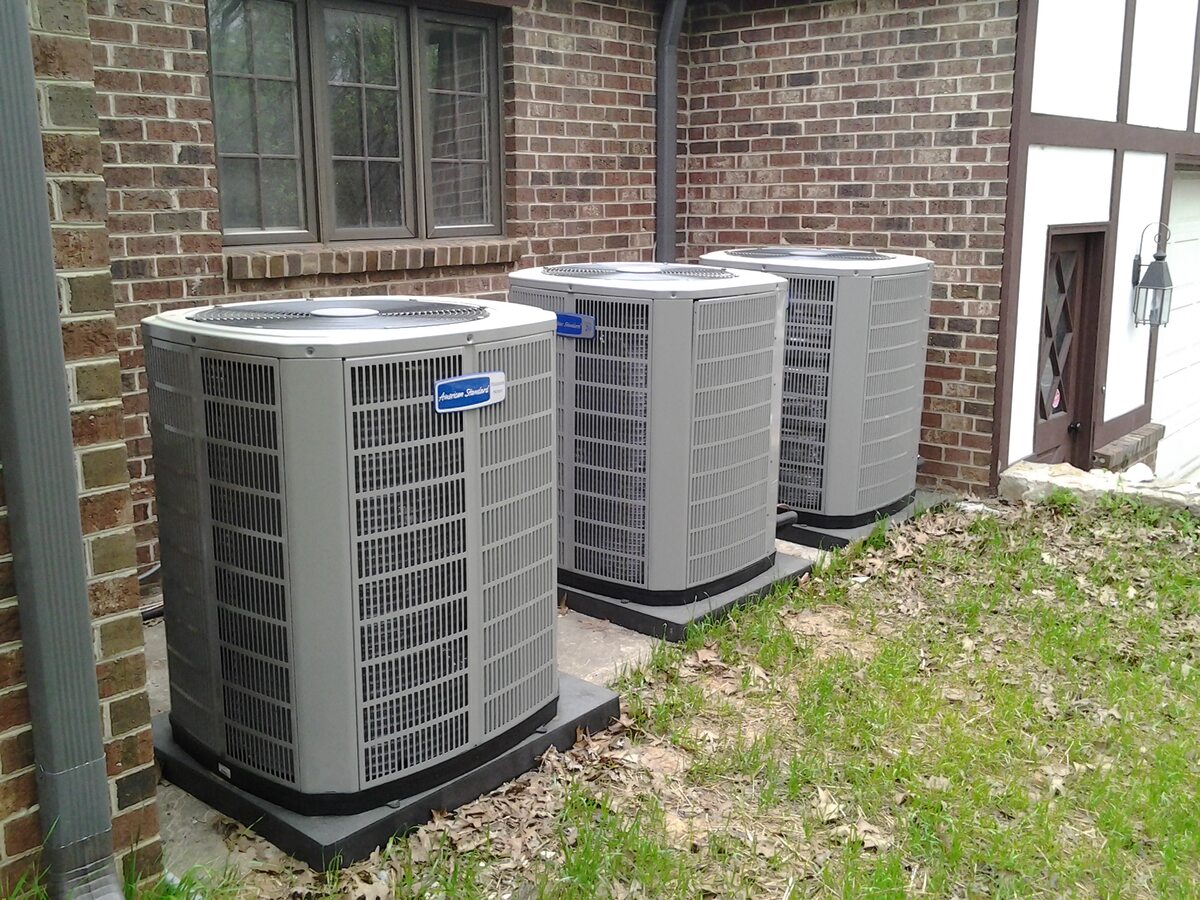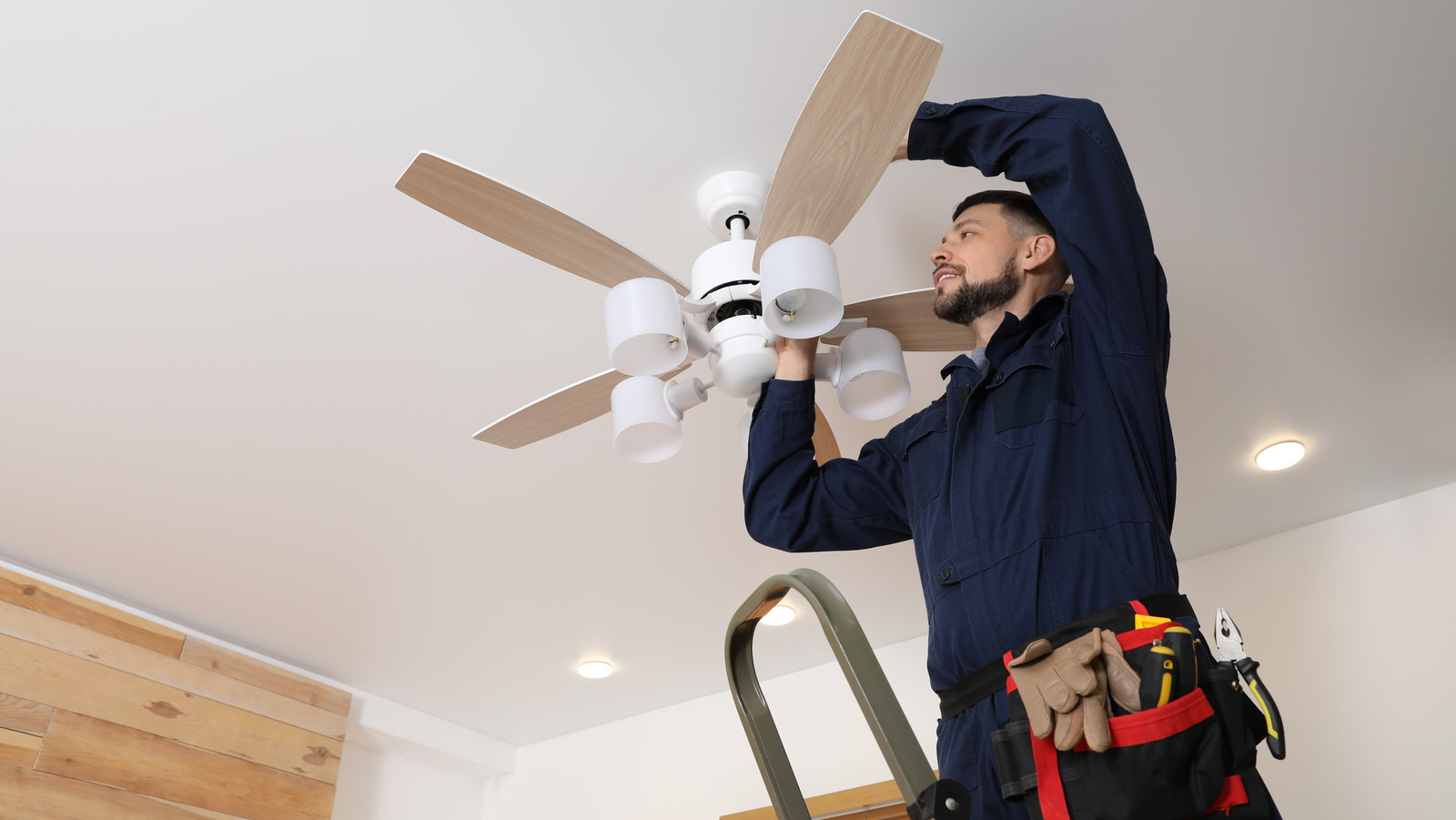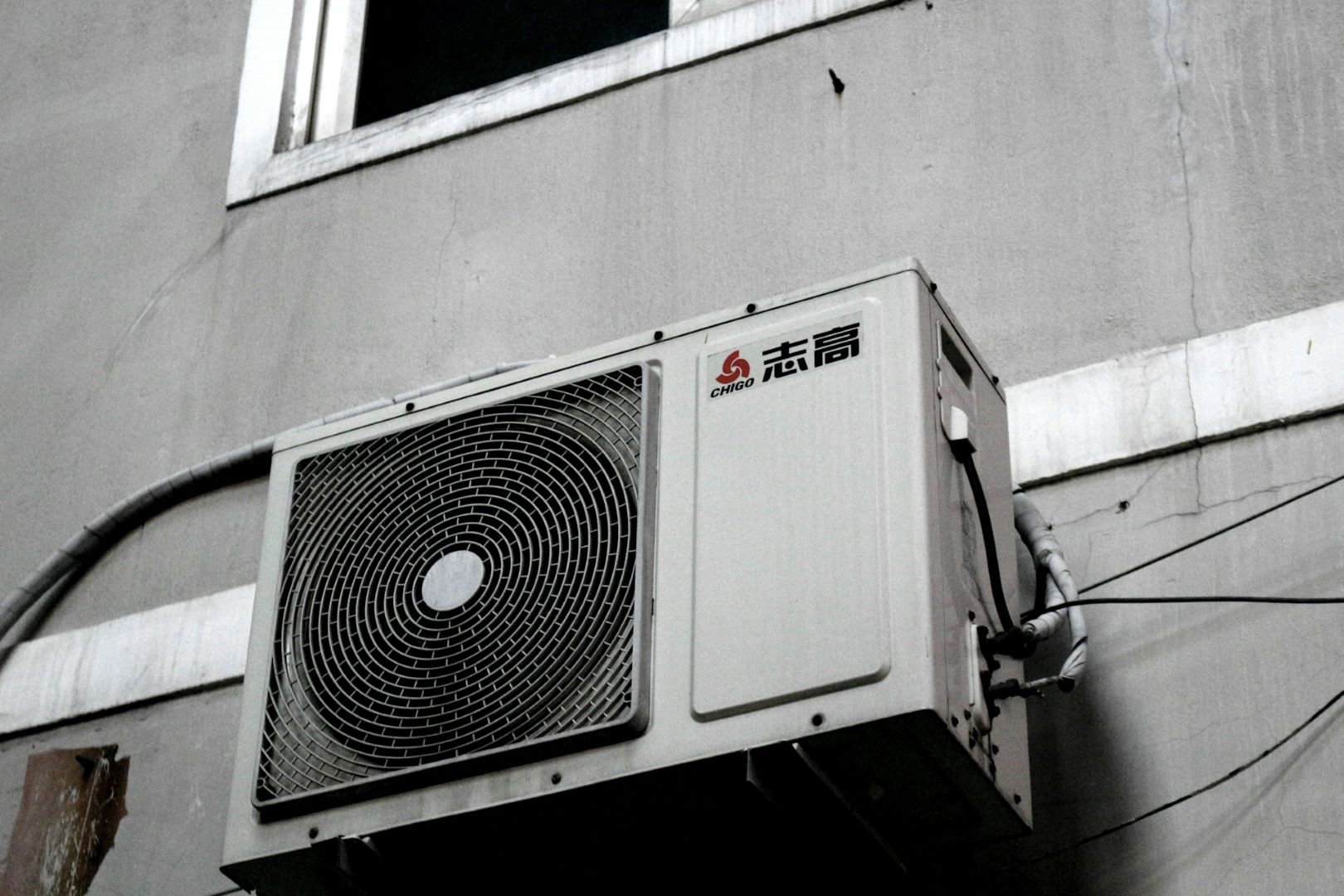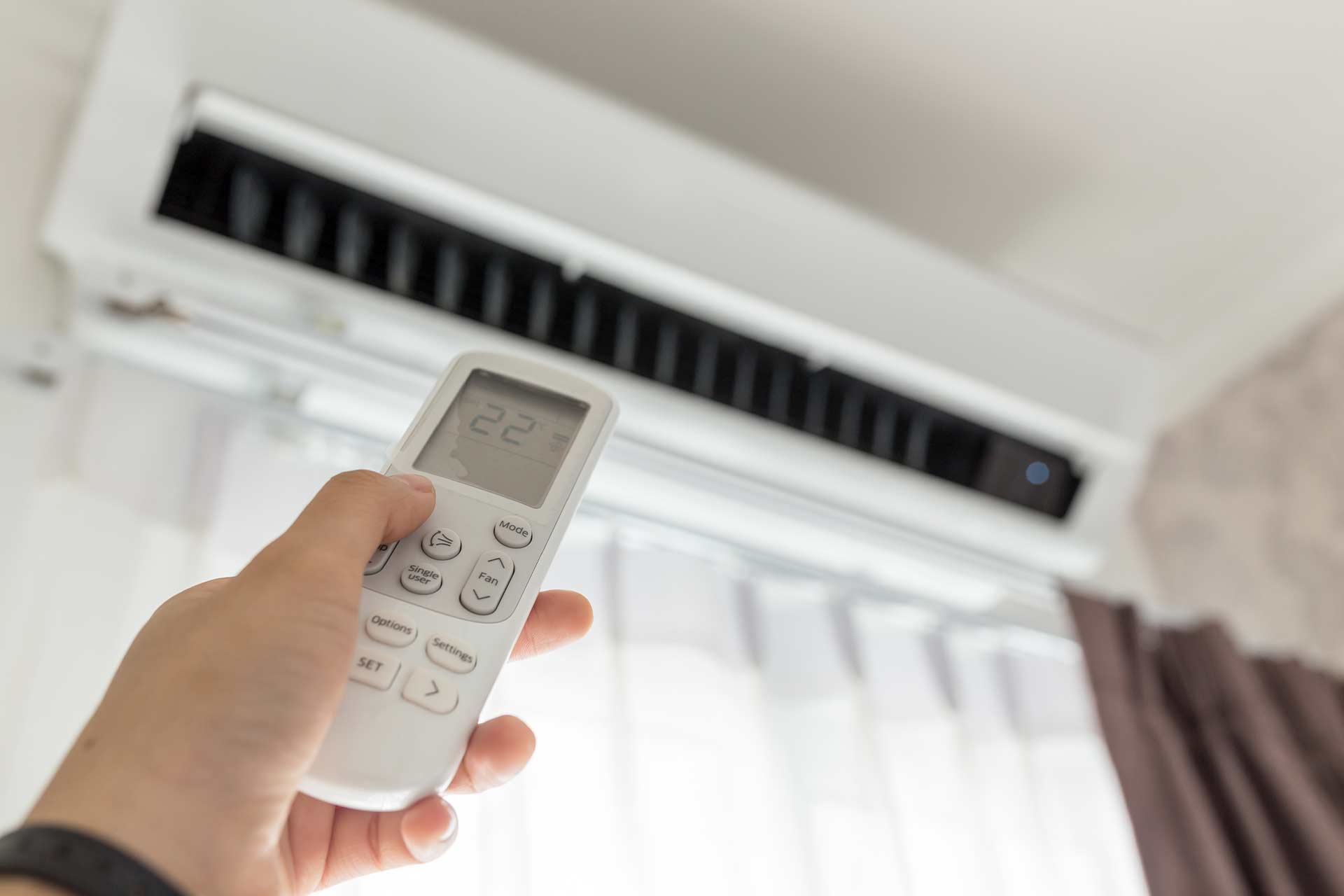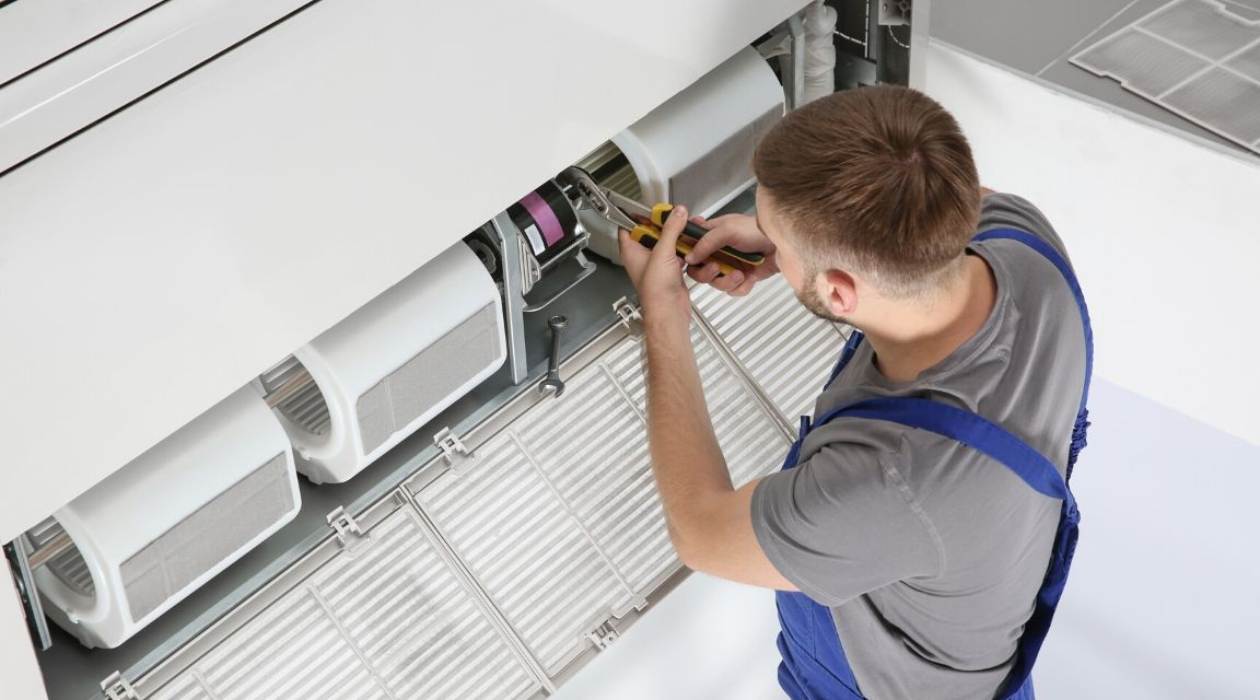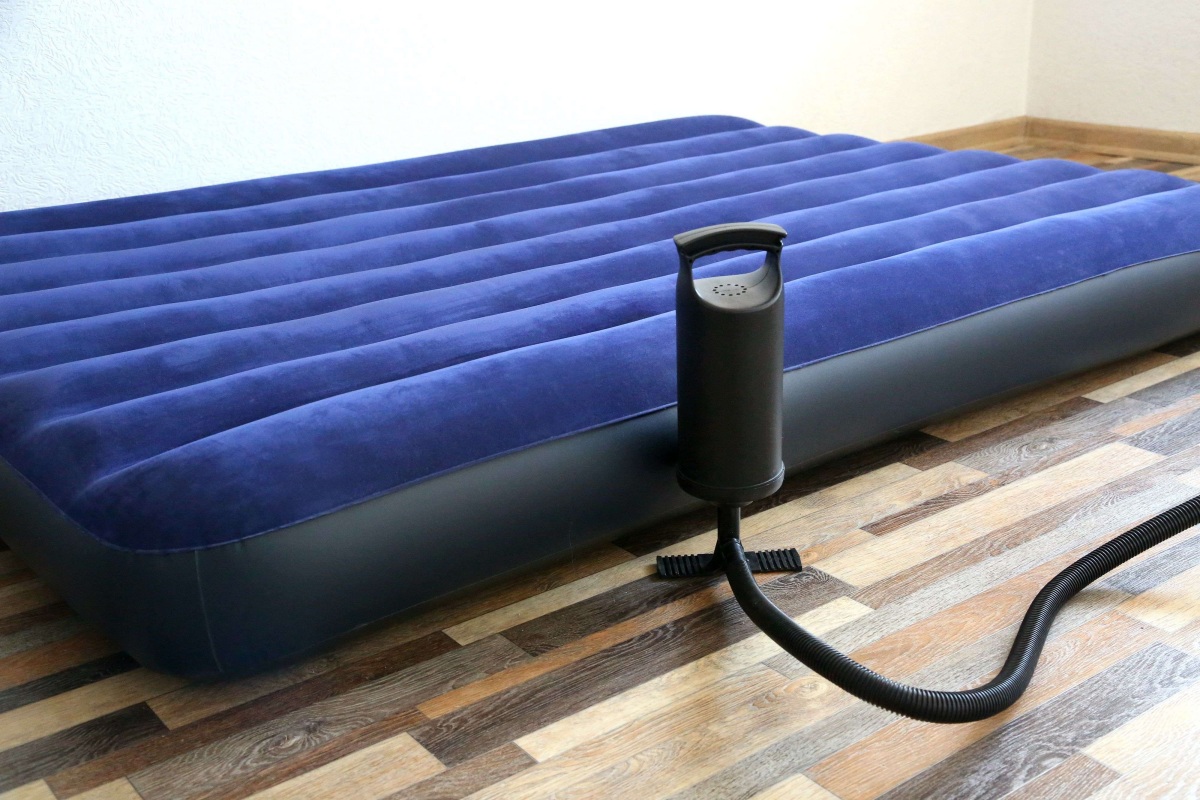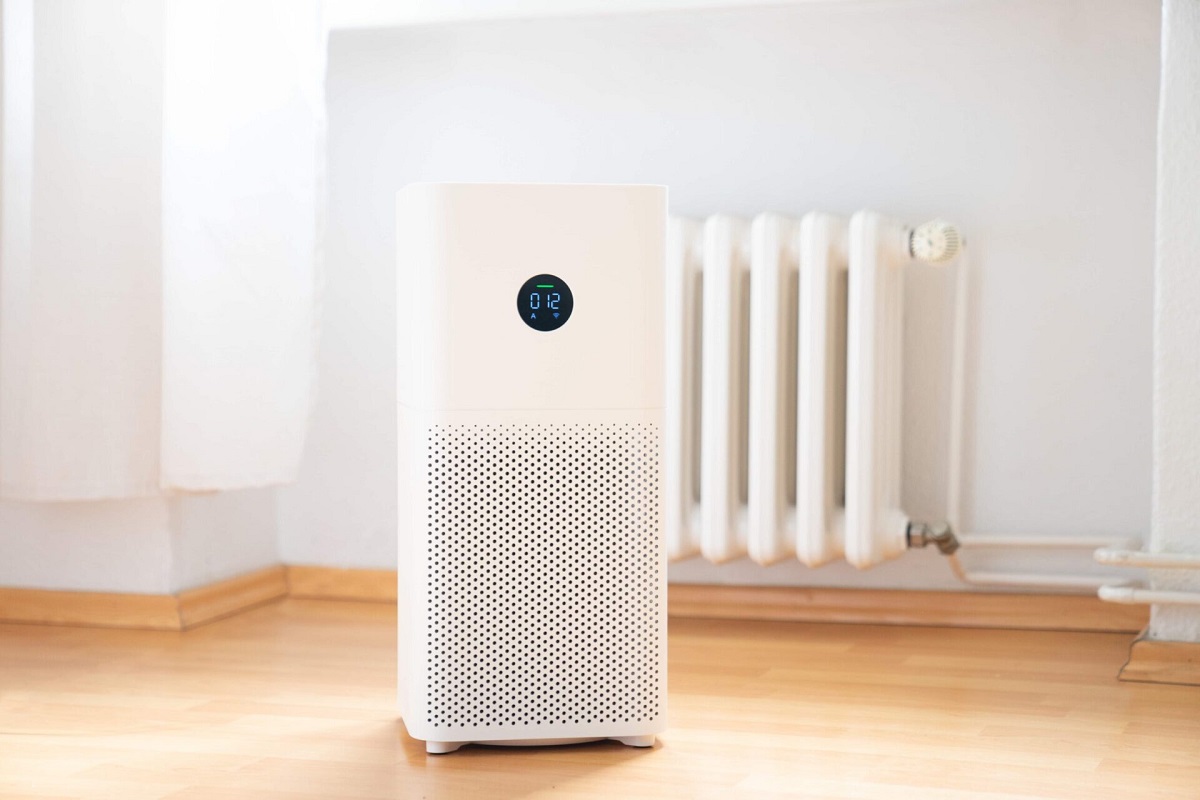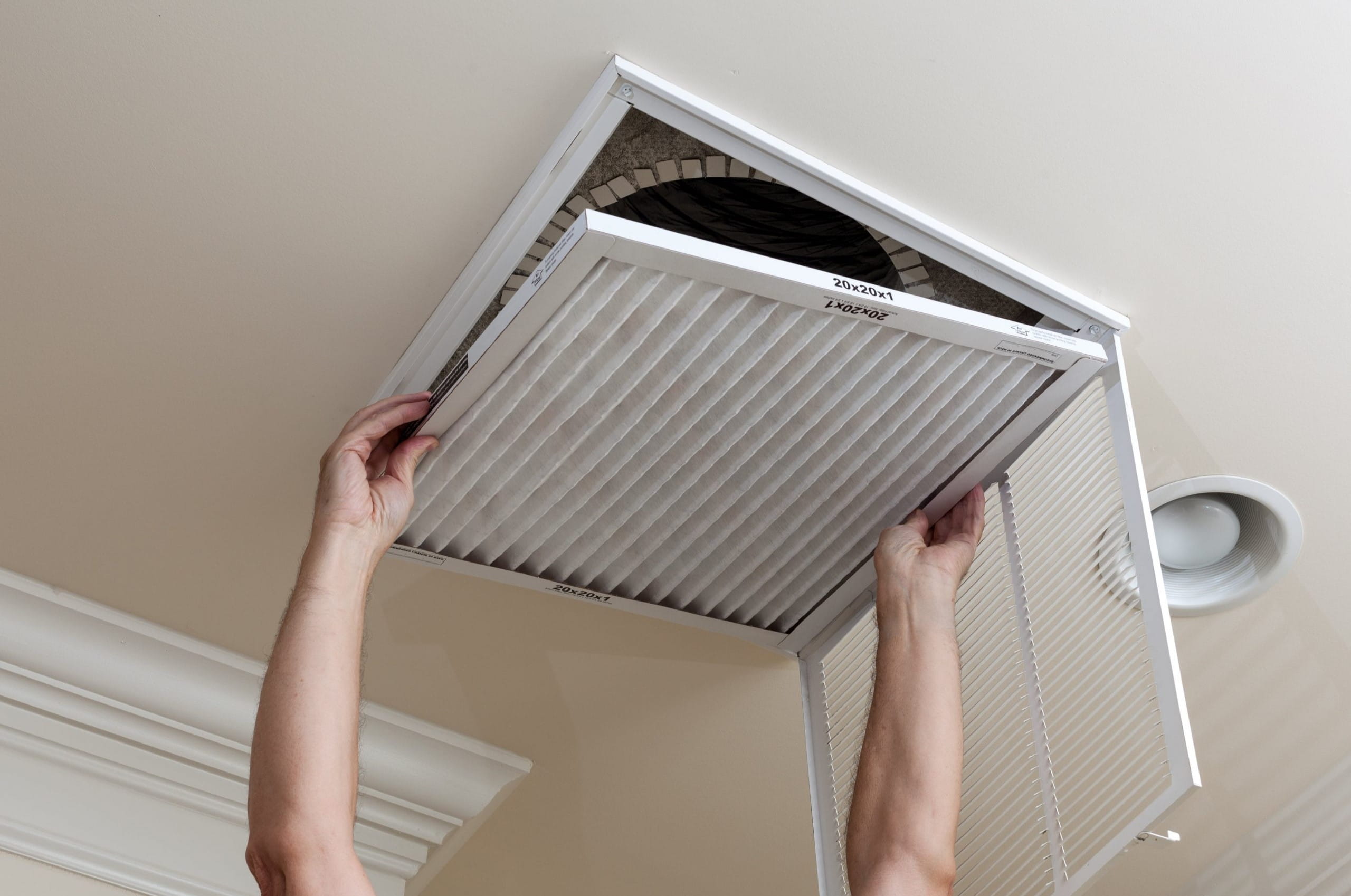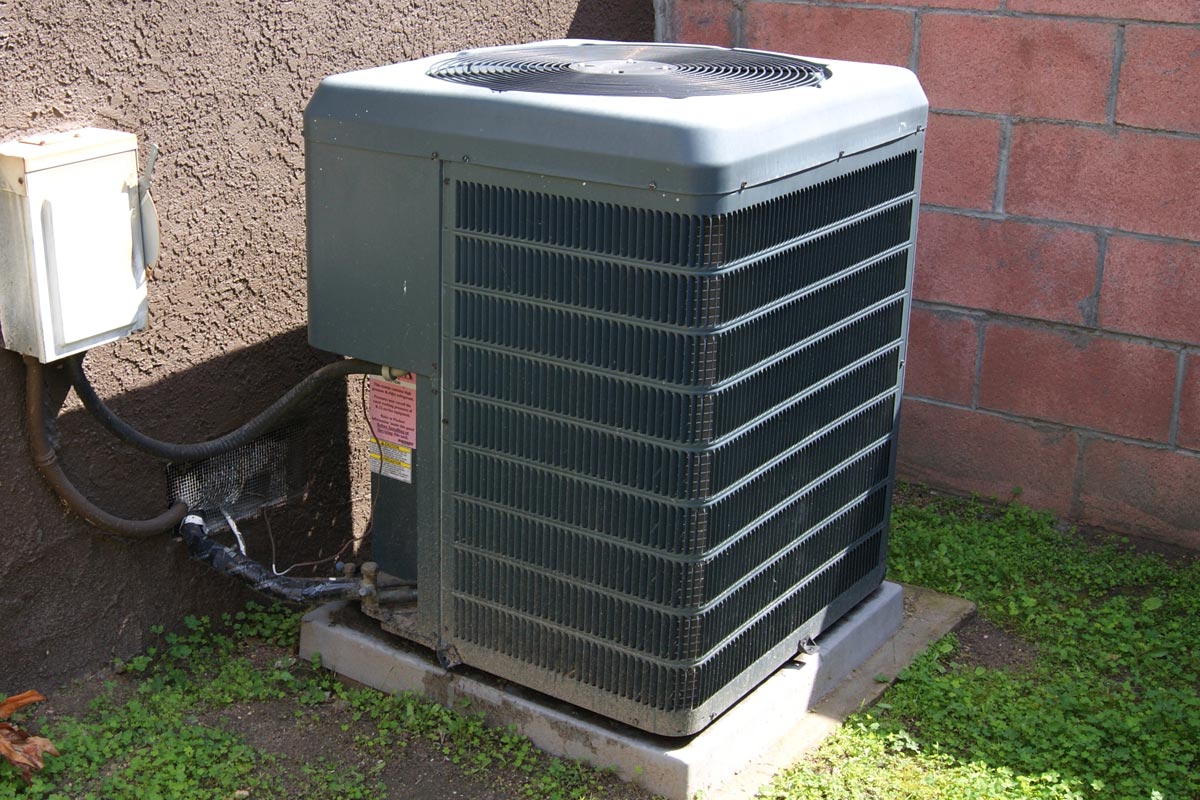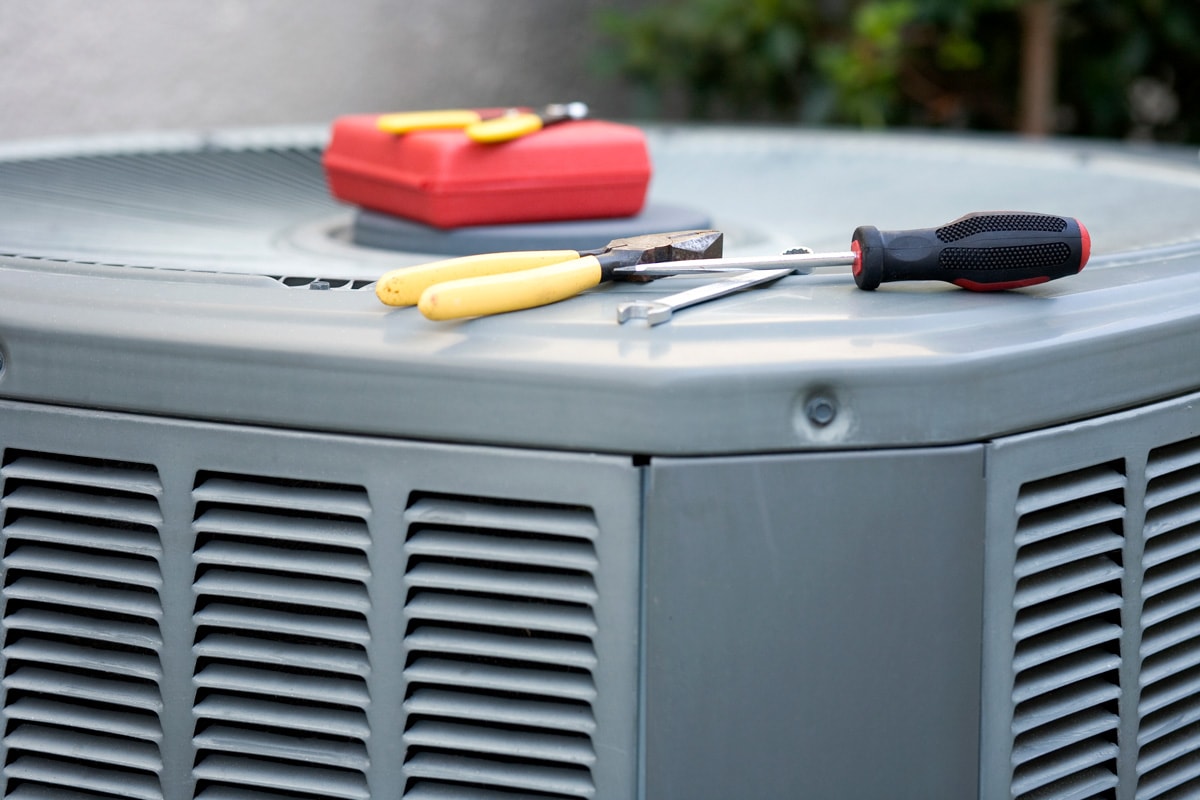Home>Home Maintenance>How Long Does It Take To Install Air Conditioning
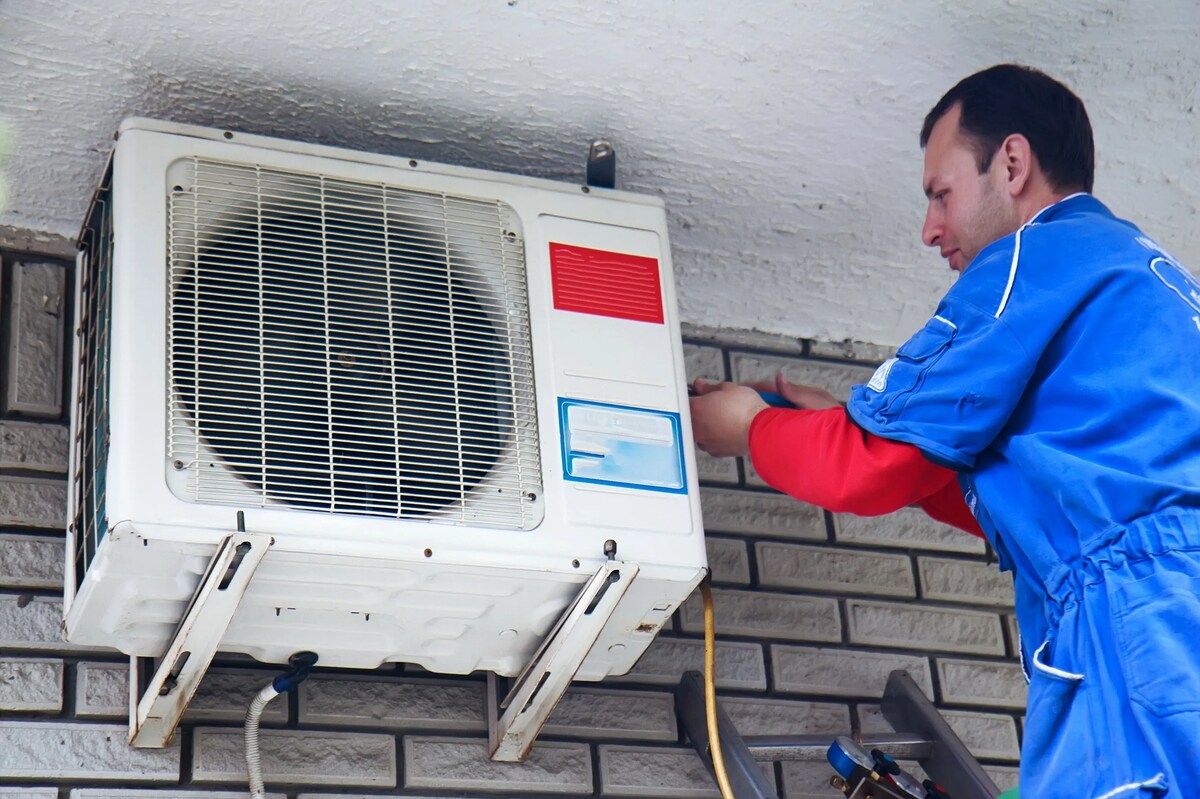

Home Maintenance
How Long Does It Take To Install Air Conditioning
Modified: August 28, 2024
Need air conditioning installed? Discover how long it takes to complete the installation process with our expert home maintenance services.
(Many of the links in this article redirect to a specific reviewed product. Your purchase of these products through affiliate links helps to generate commission for Storables.com, at no extra cost. Learn more)
Introduction
Welcome to our comprehensive guide on how long it takes to install air conditioning in your home. Air conditioning installation is a crucial step in ensuring your comfort and maintaining a pleasant indoor environment, especially during hot summer months.
Installing an air conditioning system involves several factors that can impact the overall time required for the installation process. In this article, we will explore these factors, discuss the different types of air conditioning systems available, outline the pre-installation steps, delve into the installation process, and cover additional considerations to keep in mind.
Whether you are considering installing a central air conditioning system, a ductless mini-split system, or a window unit, understanding the installation process and the time it may take will help you plan accordingly and make informed decisions.
Are you ready? Let’s dive into the world of air conditioning installation and discover how long it may take to bring cool comfort to your home!
Key Takeaways:
- Installing air conditioning can take 1-3 days, depending on factors like system size and complexity. Professional installation is recommended for central air and ductless systems.
- Before installation, assess cooling needs, find a reliable contractor, obtain permits, and prepare the installation area for a smooth process. Regular maintenance and energy efficiency are crucial for long-term performance.
Factors Affecting Installation Time
The duration of air conditioning installation can vary depending on several factors. It’s important to consider these factors to have a realistic expectation of the time required for the installation process. Here are some key factors that can affect the installation time:
- Size of the System: The size of the air conditioning system plays a significant role in the installation time. Larger systems may require more complex ductwork and additional wiring, which can extend the installation process.
- Type of System: The type of air conditioning system you choose can also impact the installation time. Central air conditioning systems usually take longer to install compared to ductless mini-split systems or window units. The complexity of the system’s components and the required infrastructure can affect the installation duration.
- Existing Infrastructure: The condition of your existing infrastructure can influence the installation time. If you already have ductwork in place, installing a central air conditioning system will likely be quicker and easier compared to installing a new ductwork system from scratch.
- Accessibility: The accessibility of the installation area can affect the time it takes to install the air conditioning system. If the installation location is difficult to access or requires additional preparation, it can add time to the installation process.
- Permits and Inspections: Depending on your location, obtaining permits and scheduling inspections may be necessary before completing the installation. The time required for permit approval and inspections can extend the overall installation timeframe.
- Weather Conditions: While uncontrollable, weather conditions can impact the installation process. Extreme heat, heavy rain, or severe weather conditions may cause delays or safety concerns, affecting the overall installation time.
It’s important to note that every installation is unique, and the timeframes provided are general guidelines. Factors such as the experience and expertise of the installation team, additional customization requirements, and unforeseen complications can also influence the installation duration.
By understanding these factors, you can have a clearer understanding of the potential installation time for your air conditioning system. Next, let’s explore the different types of air conditioning systems available.
Types of Air Conditioning Systems
When it comes to air conditioning systems, there are several options available to suit different needs and preferences. Understanding these different types can help you choose the most suitable system for your home. Here are some common types of air conditioning systems:
- Central Air Conditioning: Central air conditioning systems are the most common choice for cooling larger homes. They consist of a central unit that cools the air and distributes it through ductwork to different rooms. This type of system requires professional installation, including ductwork and a compressor unit outside the home.
- Ductless Mini-Split Systems: Ductless mini-split systems are versatile and energy-efficient options. They consist of an outdoor compressor unit and one or more indoor units. These systems do not require ductwork and can be installed in specific zones or rooms. Ductless mini-split systems are ideal for homes without existing ductwork or where individual temperature control is desired.
- Window Air Conditioners: Window air conditioners are a popular choice for cooling individual rooms or smaller spaces. They are installed in a window or a specially designed opening. These units are relatively easy to install and can be a cost-effective solution for cooling specific areas.
- Portable Air Conditioners: Portable air conditioners are versatile units that can be moved from room to room. They are self-contained systems that typically require a window or vent for hot air exhaust. Portable air conditioners offer flexibility but may not provide the same cooling power as central air conditioning or other systems.
- Hybrid Air Conditioning Systems: Hybrid air conditioning systems combine the efficiency of a heat pump with a traditional central air conditioning unit. These systems offer both cooling and heating capabilities, making them a suitable option for regions with varying climates. Hybrid systems may require additional installation time due to their unique features.
Each type of air conditioning system has its own installation requirements and timelines. Central air conditioning systems and ductless mini-split systems often require professional installation, while window air conditioners and portable units can be installed by homeowners with basic knowledge and tools.
It’s important to consider your specific cooling needs, budget, and the layout of your home when selecting the type of air conditioning system. Consulting with an HVAC professional can help determine the most suitable option and provide an estimate of the installation time required.
Now that we have explored the different types of air conditioning systems, let’s move on to the pre-installation steps you should take before installing an air conditioning system in your home.
Pre-Installation Steps
Before diving into the actual installation process, there are several important pre-installation steps you should take to ensure a smooth and successful air conditioning installation. These steps will help you prepare your home and gather the necessary information for the installation team. Let’s take a closer look at these pre-installation steps:
- Assess Your Cooling Needs: Determine the cooling requirements of your home by considering factors such as the size of your living space, the number of rooms you want to cool, and any specific temperature preferences. This will help you choose the appropriate size and type of air conditioning system.
- Find a Reliable HVAC Contractor: Research and select a reputable HVAC contractor with experience in air conditioning installation. Read reviews, ask for referrals, and ensure they have the necessary licenses and certifications.
- Obtain Necessary Permits: Check if there are any permits required for the installation of an air conditioning system in your area. Contact your local building department to inquire about the permitting process and any associated fees.
- Plan the Installation Location: Decide on the specific location for the air conditioning system installation. For central air conditioning systems, this typically involves selecting an appropriate outdoor location for the compressor unit and planning the placement of indoor vents and registers.
- Clear the Installation Area: Ensure that the installation area is clear of any obstructions or debris. Clearing the area will help facilitate the installation process and ensure the safety of the installation team.
- Prepare the Electrical System: Check the electrical requirements of the air conditioning system and ensure that your home’s electrical system can handle the load. It may be necessary to upgrade or install additional electrical circuits.
- Gather Necessary Documentation: Collect any relevant documentation, including warranty information, user manuals, and maintenance guides for the new air conditioning system. This will come in handy for future reference and regular maintenance.
- Communicate with the Installation Team: Prior to the installation, establish clear communication with the installation team. Discuss any specific concerns or requirements you may have and ensure that they have all the necessary information related to your home’s layout and construction.
By following these pre-installation steps, you can streamline the installation process and minimize any potential delays or complications. Taking the time to adequately prepare will help ensure a successful and efficient air conditioning installation.
Now that you have completed the pre-installation steps, let’s move on to the installation process itself, where we will detail the steps involved in installing an air conditioning system in your home.
The time it takes to install air conditioning can vary depending on factors such as the size of the space, the type of system, and any necessary ductwork. On average, it can take anywhere from a few hours to a few days for a professional installation.
Installation Process
The installation process of an air conditioning system involves several steps that vary depending on the type and complexity of the system. While it is recommended to hire a professional HVAC contractor for installation, it’s helpful to have a general understanding of the process. Here is an overview of the typical installation process:
- Siting and Mounting: For central air conditioning systems, the outdoor compressor unit is first installed in a suitable location outside the home. This may involve pouring a concrete pad or securing the unit to an existing platform. Ductless mini-split systems require mounting the outdoor unit on a wall or other secure surface.
- Ductwork Installation: If you are installing a central air conditioning system or a hybrid system, ductwork may need to be installed. This involves routing the ducts through walls, ceilings, or floors to provide air distribution to each room.
- Piping and Wiring: The installation team will connect the refrigerant lines and electrical wiring between the indoor and outdoor units. This step ensures proper communication and refrigerant flow within the system.
- Indoor Unit Installation: For central air conditioning systems, indoor air handling units are typically installed in the attic, basement, or utility room. Ductless mini-split systems have an indoor unit that mounts directly on the wall or ceiling. The installation team will properly secure and connect these units.
- Thermostat Installation: The thermostat, which controls the temperature settings and system operation, is installed in a convenient location within the home. This may involve replacing an existing thermostat or installing a new one.
- Testing and Calibration: Once the system installation is complete, the installation team will perform tests to ensure proper operation. This includes checking refrigerant levels, verifying airflow, and calibrating the thermostat for accurate temperature control.
- System Startup: After successful testing and calibration, the air conditioning system is started up, and the installation team will guide you through the initial system setup, such as programming the thermostat and explaining how to operate the system efficiently.
- Final Inspection: In some areas, a final inspection may be required to ensure that the installation meets local building codes and safety standards. The installation team will coordinate with the appropriate inspector to schedule the final inspection.
It is important to note that the installation process may vary depending on the specific system and any customization requirements. Additionally, the timeline for each step may differ based on the complexity of the installation and any unforeseen challenges that may arise during the process.
By hiring a professional HVAC contractor, you can ensure that the installation process is carried out efficiently and in compliance with industry standards. Their expertise and knowledge will help minimize any potential errors or issues during installation.
Now that you have a clear understanding of the installation process, let’s explore some additional considerations to keep in mind when installing an air conditioning system in your home.
Read more: How Long Does It Take To Install Blinds
Additional Considerations
While the installation process is a crucial aspect of installing an air conditioning system, there are several additional considerations to keep in mind to ensure a successful and long-lasting installation. Here are some important factors to consider:
- Maintenance and Regular Servicing: Once the air conditioning system is installed, it is important to establish a regular maintenance schedule. This includes cleaning or replacing air filters, inspecting and cleaning the outdoor unit, and scheduling professional servicing to ensure optimum performance and energy efficiency.
- Energy Efficiency: Consider the energy efficiency of the air conditioning system you are installing. Look for systems with high SEER (Seasonal Energy Efficiency Ratio) ratings, as they indicate higher energy efficiency and potential cost savings over time.
- Proper Sizing: Ensure that the air conditioning system is properly sized for your home. An oversized system may lead to short-cycling, where the system constantly switches on and off, resulting in inefficient operation and increased wear and tear. An undersized system, on the other hand, may struggle to cool your home adequately.
- Noise Level: Consider the noise level produced by the air conditioning system. If noise is a concern, opt for quieter systems or discuss noise reduction measures with the installation team.
- Warranty and After-Sales Support: Be aware of the warranty coverage provided by the manufacturer and understand the terms and conditions. Additionally, inquire about the after-sales support offered by the installation company to address any potential issues or concerns that may arise after installation.
- Energy-Saving Options: Explore additional energy-saving options for your air conditioning system, such as programmable thermostats, zone controls, or smart home integration. These features can help optimize energy usage and enhance comfort in your home.
- Proper Insulation and Weatherization: Ensure your home is properly insulated and weatherized to minimize energy loss and maximize the efficiency of your air conditioning system. Sealing air leaks, insulating walls, ceilings, and attics, and ensuring proper ventilation can significantly impact the effectiveness of your cooling system.
By considering these additional factors, you can make informed decisions during the installation process, maximize the efficiency and longevity of your air conditioning system, and create a more comfortable indoor environment.
Now that we have explored the installation process and additional considerations, let’s address some frequently asked questions about air conditioning installation.
Frequently Asked Questions
1. How long does it typically take to install a central air conditioning system?
The installation time for a central air conditioning system can vary depending on various factors such as the size of your home and the complexity of the installation. On average, the installation process can take anywhere from one to three days.
2. Can I install an air conditioning system myself?
While it is possible to install a window unit or portable air conditioner by yourself, it is highly recommended to hire a professional HVAC contractor for the installation of central air conditioning or ductless mini-split systems. They have the necessary knowledge and expertise to ensure proper installation and system performance.
3. Do I need to obtain permits for air conditioning installation?
Permit requirements vary depending on your location and the type of air conditioning system being installed. It is advisable to check with your local building department to determine if permits are required and to learn about any associated fees.
4. How often should I have my air conditioning system serviced?
Regular maintenance is essential for the optimal performance and longevity of your air conditioning system. It is recommended to have your system serviced at least once a year, ideally before the start of the cooling season, to clean the unit, inspect for any potential issues, and ensure proper functioning.
5. What can I do to improve the energy efficiency of my air conditioning system?
There are several steps you can take to improve the energy efficiency of your air conditioning system. These include regular maintenance, proper insulation and weatherization of your home, using programmable thermostats, and considering energy-saving options such as zone controls or smart home integration.
6. Is it necessary to replace my ductwork when installing a new air conditioning system?
In some cases, existing ductwork may be suitable for a new air conditioning system. However, it is important to have the ductwork inspected to ensure proper airflow and compatibility. If the ductwork is old, damaged, or not compatible, it may need to be replaced or modified for optimal system performance.
These are just a few of the commonly asked questions about air conditioning installation. It is always recommended to consult with a qualified HVAC professional to address specific concerns and ensure a hassle-free installation process.
Now, let’s wrap up our guide on air conditioning installation.
Conclusion
Installing an air conditioning system in your home is a significant investment that can greatly enhance your comfort and quality of life, especially during hot summer months. Understanding the factors that influence installation time, the types of air conditioning systems available, and the necessary pre-installation steps is crucial to ensure a successful installation process.
By considering factors such as the size of the system, type of system, existing infrastructure, accessibility, permits, and weather conditions, you can have a realistic expectation of the time required for installation. Consulting with a professional HVAC contractor will provide valuable insights and expertise to guide you through the process.
Whether you choose a central air conditioning system, a ductless mini-split system, or a window unit, each type has its own installation requirements and considerations. Proper sizing, maintenance, energy efficiency, and noise level are among the important factors to keep in mind when selecting and installing your air conditioning system.
Pre-installation steps including assessing cooling needs, finding a reliable contractor, obtaining necessary permits, planning the installation location, and preparing the electrical system will help streamline the installation process and ensure a smooth experience. Regular maintenance and servicing, energy-saving options, and proper insulation and weatherization are all important considerations to maximize the efficiency and lifespan of your air conditioning system.
Lastly, common questions about installation time, DIY installation, permits, maintenance, energy efficiency, and ductwork replacement have been addressed to provide a comprehensive understanding of air conditioning installation.
We hope this guide has provided valuable insights and will help you navigate the installation process with confidence. With the right knowledge and professional support, you can enjoy a cool, comfortable, and energy-efficient home for years to come.
Frequently Asked Questions about How Long Does It Take To Install Air Conditioning
Was this page helpful?
At Storables.com, we guarantee accurate and reliable information. Our content, validated by Expert Board Contributors, is crafted following stringent Editorial Policies. We're committed to providing you with well-researched, expert-backed insights for all your informational needs.

